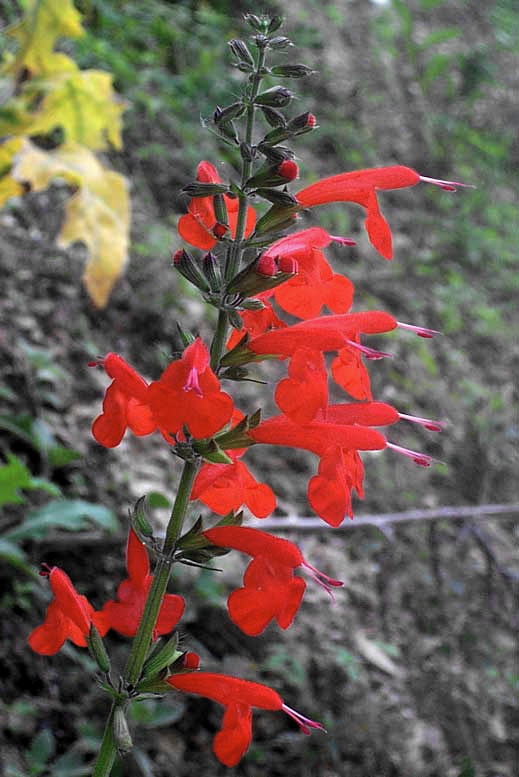Excerpts from Jim Conrad's
Naturalist Newsletter
from the August 31, 2007 Newsletter issued from Sierra Gorda Biosphere Reserve, QUERÉTARO, MÉXICO
SCARLET SAGE
One of the most eye-catching flowering herbs here grows among limestone outcrops along the reservoir road. It's attention-getting because of its flowers, which are so red that on a dark, overcast morning it's hard for the eyes to focus on them. You can see such blossoms below:

This is SALVIA COCCINEA, found throughout tropical America north into the southern US, from coast to coast. Probably its most common English name is Scarlet Sage, though the Scarlet Sage gardeners buy in the spring is a different species, a horticulturally modified plant based on a wild Brazilian species, Salvia splendens. Garden Sage, the one used as a seasoning, is Salvia officinalis.
So, our wild-growing Scarlet Sage is a real sage because it belongs to the genus Salvia. Salvia is a vast genus with over 900 species and most of them are either bright red or bright blue. You know you have a Salvia when your plant is a Mint-Family member whose flowers bear only two stamens, the calyx is divided into distinct upper and lower parts, the leaves are deciduous, and the corolla's upper lip is either rounded or two-lobed.
At www.backyardnature.net/fl_polln.htm I provide a diagram showing how sage-flower two stamens bear "levers" that cause the stamens to swivel down to douse a hummingbird's head when the bird's bill is inserted.